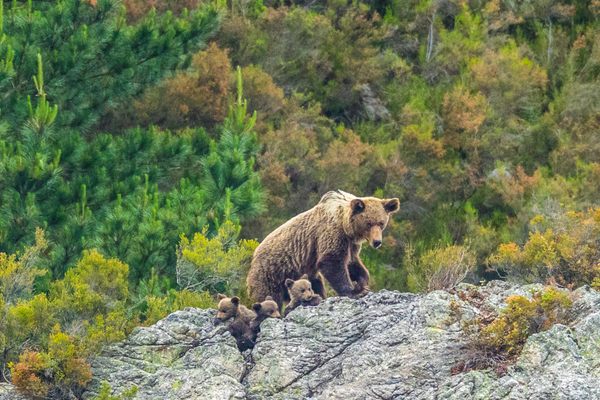About
According to legend-made-fact, in 1889 newspaper mogul William Randolph Hearst approached his reporter, Allen Kelley with a challenge: "Do you think you could get me a California grizzly bear?"
"I think I could get a bear if I tried. Do you want him dead or alive?"
"Alive."
Kelley set of on his mission to find the elusive beast that has so threatened early settlers, but had by this time all but disappeared. He finally found his quarry near Los Angeles. The huge bear that became known as "Monarch" was transported to San Francisco in November 1889 where he was installed in the menagerie at Woodward’s Gardens, a (long since vanished) combination zoo, museum and amusement park on Mission and Valencia Streets between 14th and 15th.
He eventually came to live at Golden Gate Park - once home an impressive assortment of animals of various kinds, now represented solely by the park's resident Bison.
Monarch was exhibited at the 1894 Midwinter Exposition where he was known as the "last wild grizzly bear in California" and eventually went on to become the symbol for California, depicted on the state flag, and adored by local citizens.
Monarch died in 1911, after 22 years in captivity, his pelt taxidermied and placed on display at the Academy of Sciences at Golden Gate Park. The rest of the remains were originally buried in the park, but he was later exhumed and his skeleton was sent to UC Berkeley's Museum of Vertebrate Zoology. Although Monarch is no longer on display at Academy of Sciences, he remains part of their permanent research collections.
The bear enclosure remained in place until the 1920s, when a bear mauling of a boy who had climbed into the enclosure prompted the removal of the animals from the park. The enclosure stood at the site now occupied by the Druid Circles.
The Grizzly Bear is now extinct in California. The last known bear was shot in 1922, fewer than 75 years after the discovery of gold in the Sacramento hills.
Related Tags
Community Contributors
Added By
Published
January 26, 2011































